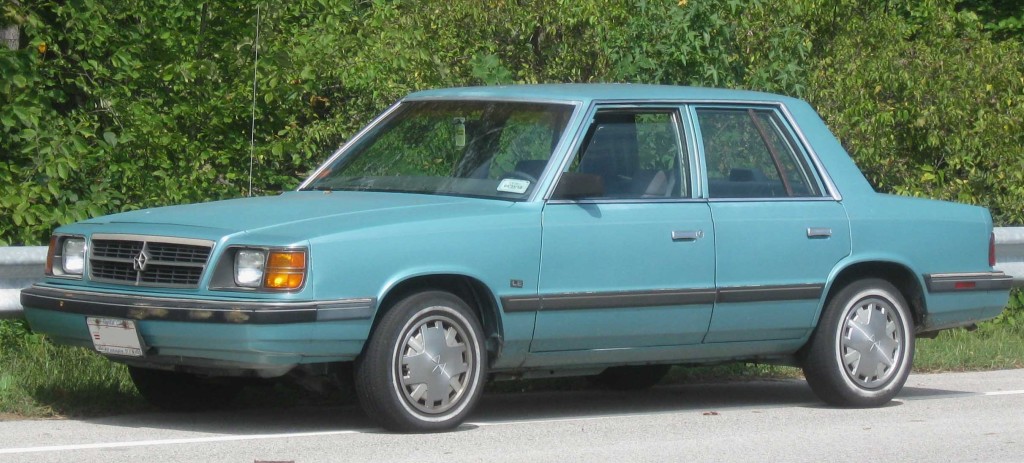Chrysler almost went bankrupt when the first K-bodies came out. Fighting through dismal sales of historic rear wheel drive models, the K-body tooling bills, launch hick-ups, the finish line finally was in sight. Lee Iacocca was desperate for cash flow. All of the first vehicles in the initial build schedule were fully loaded with all of the options. All of the engineering thrifting needed to sell a vehicle for the $9800 advertised base price had been done right. Engineers become creative when their backs are to the wall. Changing the bumpers to shorten the vehicle by 2 inches so that 7 cars instead of 6 per row would fit onto the captive train cars used for vehicle delivery, saved $100 which was the profit on the base vehicle. Sticker shock killed the initial sales. Curious buyers attracted to the new model hype came into the dealers to see, but turned away when none of the lowest cost vehicles were on display. The funny part of the story is that the buying public did not want to purchase the base model with its manual transmission and vinyl seats. Chrysler did not want to make vehicles with manual transmissions or vinyl seats either because these components actually cost more than the cloth seats and automatic transmissions that actually sold. Actually, what turned out to be important was that the buyers wanted to judge the value of the options for themselves. Welcome to mass customization!
It is easy to determine whether a design is ready for mass customization. A manufacturer of excavators missed the mark by designing a custom frame for their combo dozer option.

Equipment that can fill multiple roles is easier to employ to generate a profit. An excavator that also functions as a bulldozer saves equipment mobilization.
Engineering is all about planning and implementing profitable future products. I am currently designing an electric vehicle. Even though lithium batteries like you find on a Tesla are a lower total cost option, it will be a while before the the buying public is educated enough to invest in the higher up front cost. This is where mass customization is all about planning for options. A good measure for my design success will be whether it is possible to offer all vehicle options from a common design frame. At the same time, it will be necessary to avoid penalizing the base model pricing when adding the design provisions needed to offer the full range of options.

























